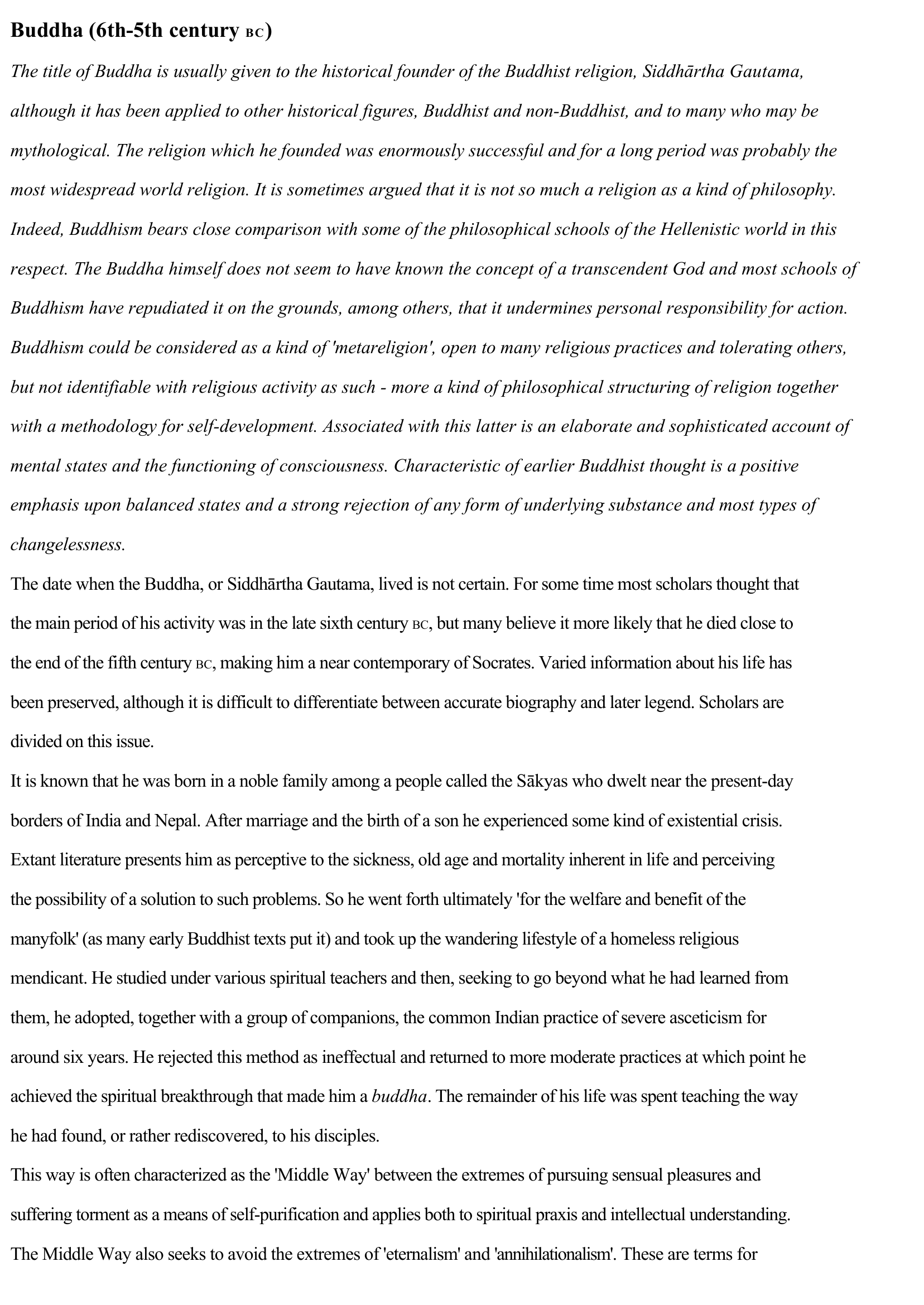Buddha
Publié le 16/05/2020
Extrait du document
«
Buddha (6th-5th century BC)
The title of Buddha is usually given to the historical founder of the Buddhist religion, Siddhārtha Gautama,
although it has been applied to other historical figures, Buddhist and non-Buddhist, and to many who may be
mythological.
The religion which he founded was enormously successful and for a long period was probably the
most widespread world religion.
It is sometimes argued that it is not so much a religion as a kind of philosophy.
Indeed, Buddhism bears close comparison with some of the philosophical schools of the Hellenistic world in this
respect.
The Buddha himself does not seem to have known the concept of a transcendent God and most schools of
Buddhism have repudiated it on the grounds, among others, that it undermines personal responsibility for action.
Buddhism could be considered as a kind of 'metareligion' , open to many religious practices and tolerating others,
but not identifiable with religious activity as such - more a kind of philosophical structuring of religion together
with a methodology for self-development.
Associated with this latter is an elaborate and sophisticated account of
mental states and the functioning of consciousness.
Characteristic of earlier Buddhist thought is a positive
emphasis upon balanced states and a strong rejection of any form of underlying substance and most types of
changelessness.
The date when the Buddha, or Siddh ārtha Gautama, lived is not certain.
For some time most scholars thought that
the main period of his activity was in the late sixth century BC, but many believe it more likely that he died close to
the end of the fifth century BC, making him a near contemporary of Socrates.
Varied information about his life has
been preserved, although it is difficult to differentiate between accurate biography and later legend.
Scholars are
divided on this issue.
It is known that he was born in a noble family among a people called the S ākyas who dwelt near the present-day
borders of India and Nepal.
After marriage and the birth of a son he experienced some kind of existential crisis.
Extant literature presents him as perceptive to the sickness, old age and mortality inherent in life and perceiving
the possibility of a solution to such problems.
So he went forth ultimately 'for the welfare and benefit of the
manyfolk' (as many early Buddhist texts put it) and took up the wandering lifestyle of a homeless religious
mendicant.
He studied under various spiritual teachers and then, seeking to go beyond what he had learned from
them, he adopted, together with a group of companions, the common Indian practice of severe asceticism for
around six years.
He rejected this method as ineffectual and returned to more moderate practices at which point he
achieved the spiritual breakthrough that made him a buddha .
The remainder of his life was spent teaching the way
he had found, or rather rediscovered, to his disciples.
This way is often characterized as the 'Middle Way' between the extremes of pursuing sensual pleasures and
suffering torment as a means of self-purification and applies both to spiritual praxis and intellectual understanding.
The Middle Way also seeks to avoid the extremes of 'eternalism' and 'annihilationalism' .
These are terms for.
»
↓↓↓ APERÇU DU DOCUMENT ↓↓↓

































